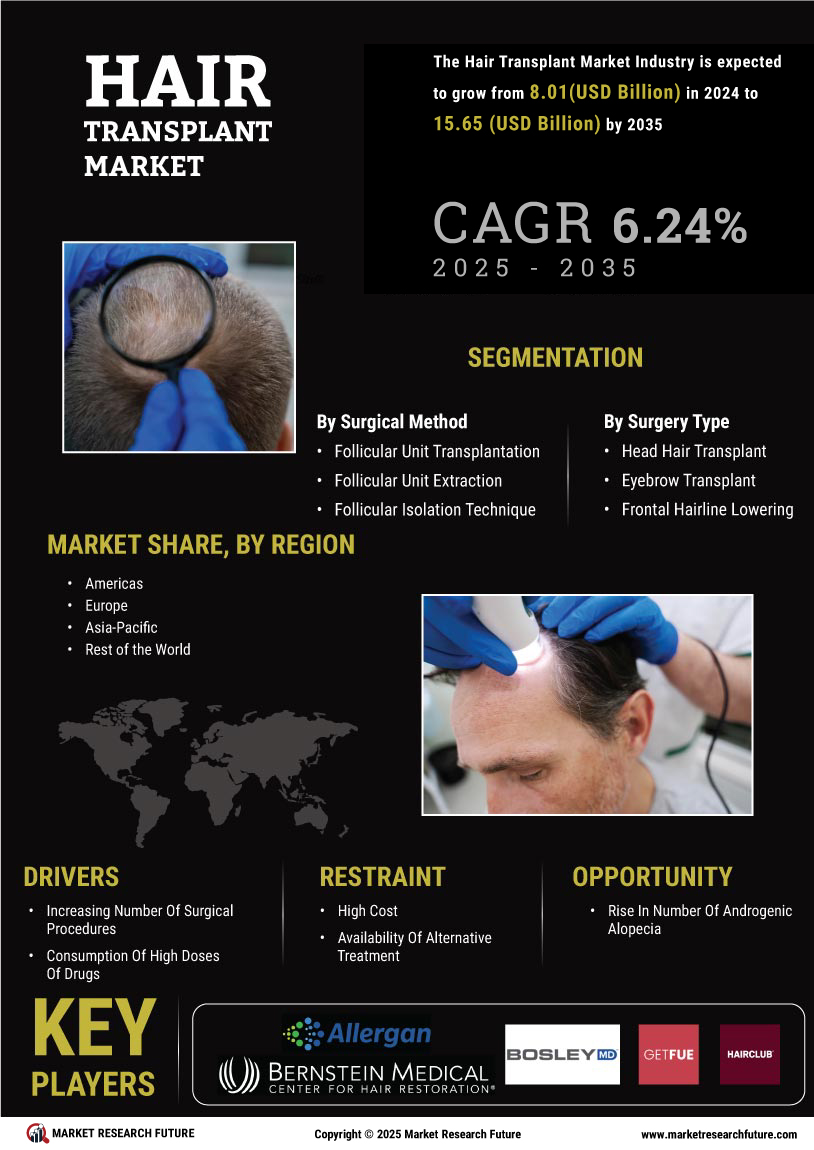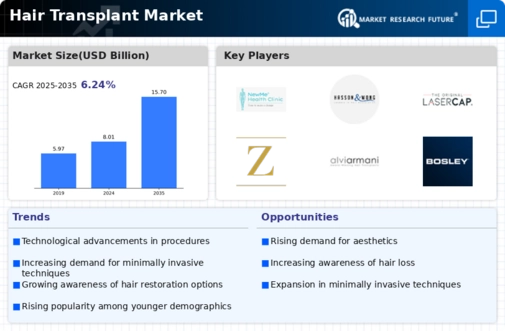Advancements in Surgical Techniques
Technological innovations in surgical techniques are significantly influencing the Hair Transplant Market. The introduction of minimally invasive procedures, such as Follicular Unit Extraction (FUE) and Direct Hair Implantation (DHI), has revolutionized the way hair transplants are performed. These advanced methods not only reduce recovery time but also enhance the overall aesthetic results, making hair transplants more appealing to potential clients. Furthermore, the integration of robotic-assisted technologies in hair restoration procedures is expected to improve precision and efficiency. As these advancements continue to evolve, they are likely to attract a broader clientele, thereby contributing to the growth of the Hair Transplant Market.
Rising Prevalence of Hair Loss Conditions
The increasing prevalence of hair loss conditions, such as androgenetic alopecia and alopecia areata, is a significant driver for the Hair Transplant Market. Studies suggest that nearly 50 percent of men and women experience some form of hair loss by the age of 50. This widespread occurrence has led to a heightened demand for effective treatment options, including hair transplants. As awareness of these conditions grows, individuals are more inclined to seek professional solutions, thereby expanding the market. The Hair Transplant Market is likely to benefit from this trend, as more people recognize the availability and effectiveness of surgical interventions for hair restoration.
Growing Investment in Aesthetic Procedures
The Hair Transplant Market is benefiting from a broader trend of increasing investment in aesthetic procedures. As disposable incomes rise and societal norms shift towards valuing personal appearance, more individuals are willing to allocate resources towards cosmetic enhancements, including hair restoration. This trend is particularly pronounced in emerging markets, where the demand for aesthetic services is rapidly growing. According to recent estimates, The Hair Transplant is expected to reach over 100 billion dollars by 2025, with hair transplants representing a significant segment. This growing investment in aesthetic procedures is likely to bolster the Hair Transplant Market, as more individuals seek to improve their appearance through surgical interventions.
Increasing Demand for Hair Restoration Solutions
The Hair Transplant Market is experiencing a notable surge in demand for hair restoration solutions. This trend is primarily driven by a growing awareness of aesthetic appearance and the psychological impact of hair loss. As individuals increasingly seek to enhance their self-esteem and confidence, the market for hair transplants expands. Recent data indicates that the hair restoration market is projected to reach a valuation of approximately 20 billion dollars by 2026, reflecting a compound annual growth rate of around 25 percent. This increasing demand is not limited to any specific demographic, as both men and women are actively seeking effective solutions to combat hair loss, thereby propelling the growth of the Hair Transplant Market.
Influence of Social Media and Celebrity Endorsements
The role of social media and celebrity endorsements in shaping consumer perceptions is increasingly evident in the Hair Transplant Market. Platforms such as Instagram and TikTok have become powerful tools for promoting hair restoration solutions, with influencers and celebrities sharing their personal experiences. This visibility not only normalizes the conversation around hair loss but also encourages individuals to consider hair transplants as a viable option. As a result, the market is witnessing a surge in inquiries and consultations, particularly among younger demographics. The Hair Transplant Market is likely to continue evolving as social media trends influence consumer behavior and decision-making.

















Leave a Comment